
6 - Applications
6.1 Biomedical
Retina replacement
The retina encoder is an eye-replacement for people with damaged eye, but intact seeing nerves. it contains a CCD chip mounted in a glass, which is capturing the image and sending the data towards the nerve simulator unit, implanted in the eyebulb. The stimulator contacts nerve endings, and stimulates them like the photons would do.
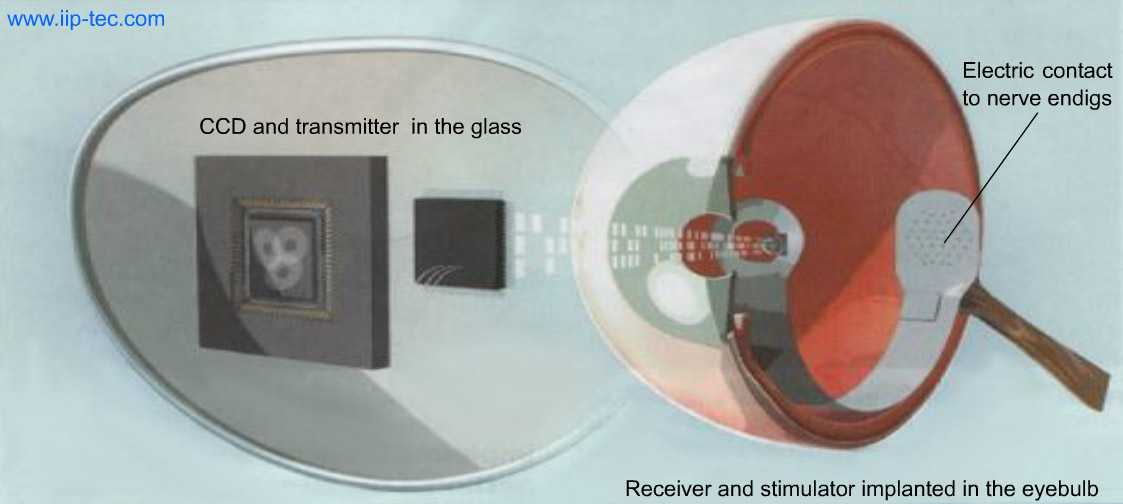
Hearing aids
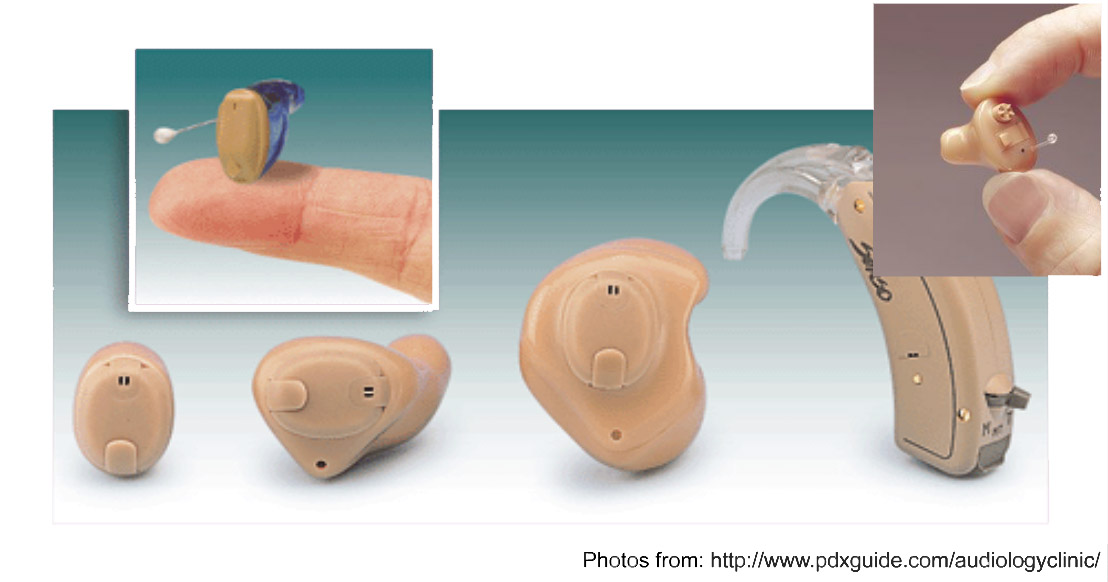
NIR photoplethysmography
Near Infrared Red Remission photoplethysmography allows the collection and evaluation of pheripheral as well as central cardio-circulatory parameters. Near infrared light directed at the tissue, those relative quantities of blood are captured by remission photoplethysmography, which pass the corresponding micro vascular system at the measuring location on the form of volume pulse waves, which are triggeed in the heart. The application of the red wave length provides an evaluation of the oxymetric condition at the measuring location. Source: CiS instituts, fur Mikrosensorik.
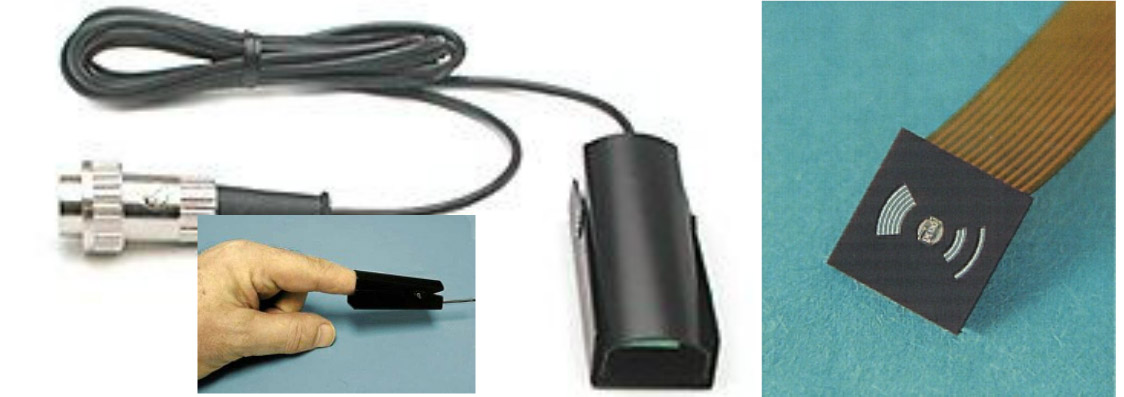
Heart pacemakers
Heart pacemakers are implantable pulse generators and accessories for treating patients who experience bradycardia, slow or irregular heartbeats caused by problems in the heart's electrical system. The complete pacemaker system determines and applies the appropriate pacing rate. The stimulation electrodes (left) are being placed in the tip of pmplantable cathetetrs where the mapping electrodes are integrated in temporary catheters. The advantages of MEMS electrodes are structures of unipolar electrodes as microelectrode arrays, high resolution of bipolar stimulation and increased current density. Source: http://www.isit.fhg.de/
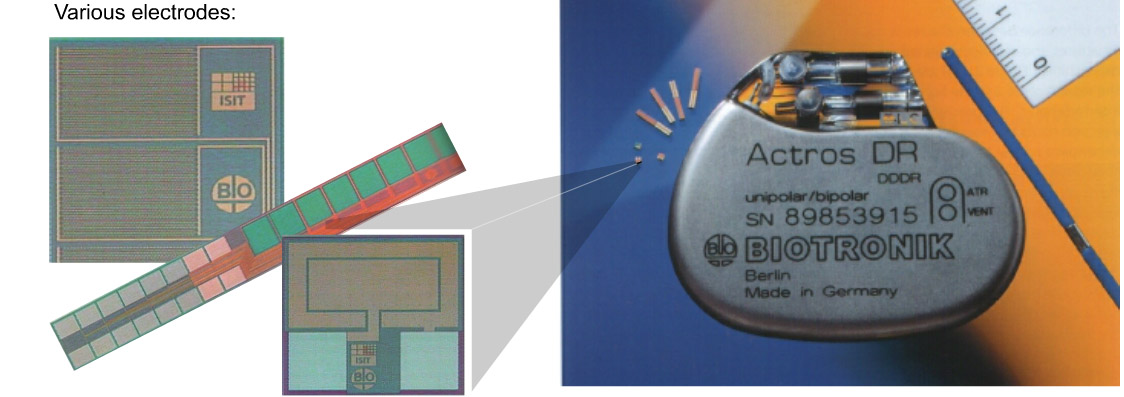
Drug delivery systems
Implantable drug delivery systems have similar components, such as an electronic controlled micropump, a biotelemetry unit, a lithium battery and reffilable reservoirs which delivers the drug where needed. The generic advantages of such systems are:
- microelectronic control, enabling preprogramming;
- highly versatile regulation, that can be adapted to each patient's needs;
- improved patient compliance arising from automation and controlled degree of self-administration;
- lower risks of infection as for precutaneous delivery, catheter delivery to targeted internal sites.
Blood glucose monitoring
The importance of blood glucose determination results from chronic disease diabetes. Continuous reading of glucose levels, including alarm functions by too high low values is a great help for people and allows a substantially improved therapy of diabetes.
The main part of the monitoring system is a silicon micromachined MST glucose sensor cell. A double lumen catheter is used to spoil a diluted part of interstitial body liquid out of the human body. Glucose values are determined externally in this perfusate liquid.
The main part of the monitoring system is a silicon micromachined MST glucose sensor cell. A double lumen catheter is used to spoil a diluted part of interstitial body liquid out of the human body. Glucose values are determined externally in this perfusate liquid.
Transdermal needle array and neural electrodes
In an effort towards mimially invasive therapy, a new technology of micro-needle array was developed. The purpose of micro-needles is to penetrate the skin less than 100 microns deep, enough to infuse the drug and make it available to the blood vessels. On the other hand, not deep enough to reach the nerve terminations and generate pain. Source: Universitat zu Lubeck

Electrophoretic chip
The electrophoretic chip is a cost-effective replacement of the expensive, time consuming laboratory electrophoresis. The microfluidic channels on the chip are made by deep Si etching and LIGA micromachining technologies. The chip itself is a credit card sized low cost disposable lab-on-a-chip system, which uses two-dimensional electrophoresis, including preliminary isoelectric focusing separation of proteins. Isoelectric focusing separates different proteins by pH values.
Cytometer
Cytometry is a method for detection of plasticity and velocity of red blood cells. The cells in the sample pass along microchannels with variable cross-section, and a camera captures their motion and deformation. An image processing system is used for computing the numerical values from the captured pictures. Source: TU Chemnitz
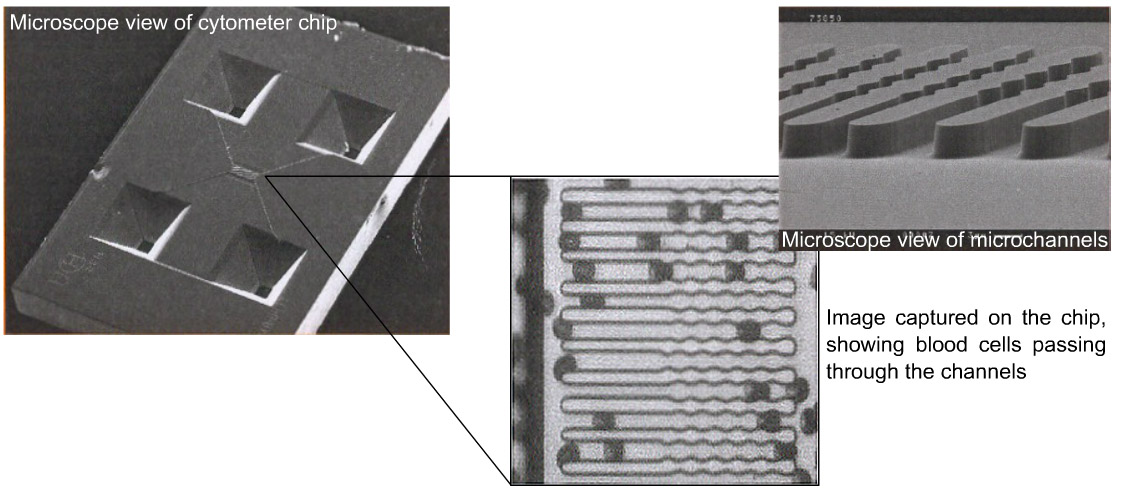
Lab on a chip
Combining MEMS and microfluidics technology, Lab-on-a-chip structures could be created. These systems analyze and measure different parameters of micro-amount of fluidics. The disposable microchips are used in biomedical, chemical, etc. applications.
Possible embedded structures:
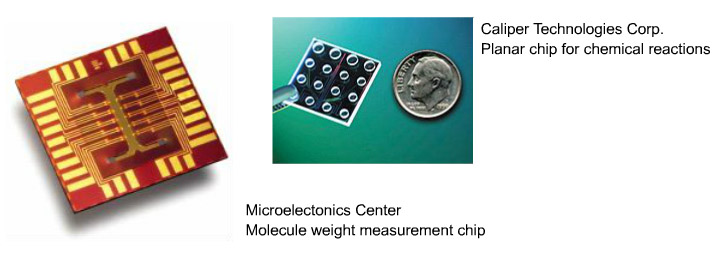
- channels with hydrophobe or hidrofil sidewalls,
- tanks,
- reaction vessels,
- valves,
- pumps,
- circulators based on electro-osmosis,
- interfaces.

| Previous (Chapter 5.) | Next |
